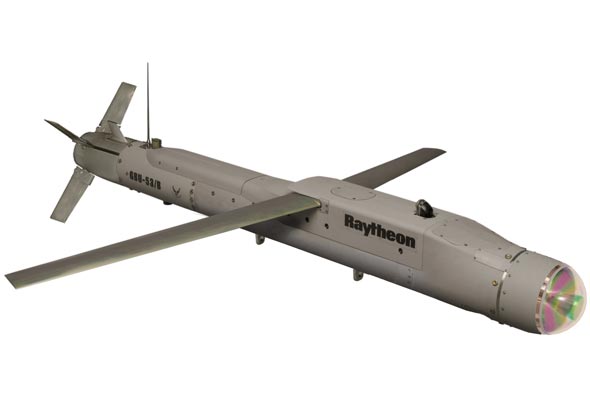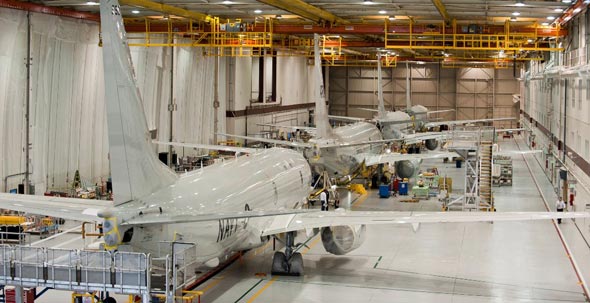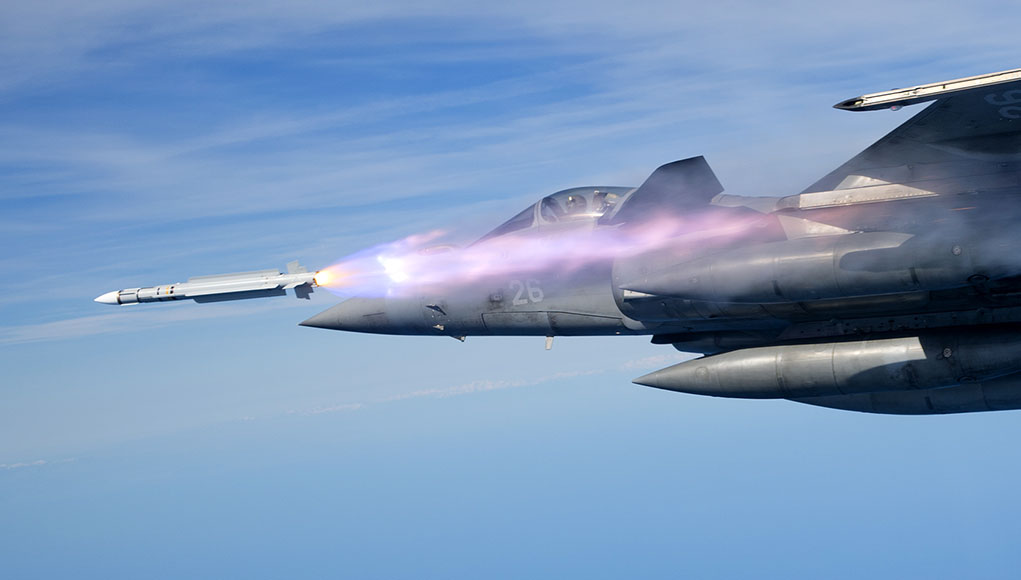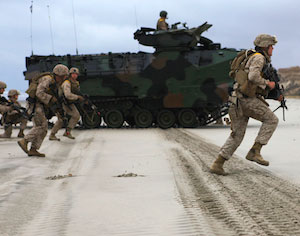SDB II Tested With Production Tri-Mode Seeker

November 16, 2011: The warhead for Raytheon Company’s Small Diameter Bomb II performed at twice what was required during a series of recent tests. This was the first demonstration of an SDB II warhead built on a fully-automated production line. “Using production-ready processes, the SDB II warhead is meeting or exceeding all requirements,” said Tom White, Raytheon’s SDB II program director. The weapon’s tri-mode seeker fuses millimeter-wave (MMW) radar, uncooled imaging infrared (IIR) and semi-active laser sensors on a single gimbal. This seeker enables the weapon to engage fixed or moving targets in day, night or adverse weather from a range of more than 40 nautical miles (74 km).
Adaptive Optics to Sharpen High Energy Laser Beams
November 16, 2011: Boeing has received a contract from the U.S. Department of Defense’s High Energy Laser – Joint Technology Office (HEL-JTO) to continue development of a prototype High Power Adaptive Optic system. Adaptive optics, originally developed for astronomical applications, minimize atmospheric distortion thus sharpening the images produced by high power astronomical telescopes. “By minimizing the distortion of a laser beam we can increase the amount of energy on a specific target. This very small, lightweight Adaptive Optic system will enhance both the range and the power of tactical laser weapons,” said Mike Rinn, Boeing Directed Energy Systems vice president and program director. Boeing and its partner team member SAIC recently completed the first phase of the system development. The High Power Adaptive Optic system will employ ultra-high speed processing and advanced sensor technologies coupled to a dedicated beacon illuminator and deformable mirror to deliver the required high-rate atmospheric correction. The team plans to test the system with the High Energy Laser Technology Demonstrator (HEL TD), a cornerstone high-energy laser program for the U.S. Army.
Lockheed Martin to Maintain PTDS Aerostats
November 15, 2011: The U.S. Army has awarded Lockheed Martin a $383 million contract to maintain, operate and sustain the Persistent Threat Detection Systems (PTDS). The tethered aerostat supports the protection of forward bases in Iraq and Afghanistan, providing real-time situational awareness, threat detection and location at extended range.
Boeing Receives $1.7B for 7 More US Navy P-8A Poseidon Aircraft
November 3, 2011: Boeing received a $1.7 billion low-rate initial production (LRIP) award from the U.S. Navy for seven additional P-8A Poseidon maritime surveillance aircraft. LRIP-II is the follow-on to an initial LRIP-I contract awarded in January to provide six Poseidon aircraft. Overall, the Navy plans to purchase 117 Boeing 737-based P-8A anti-submarine warfare, anti-surface warfare, intelligence, surveillance and reconnaissance aircraft to replace its P-3 fleet. As part of the contract, Boeing will provide aircrew and maintenance training for the Navy beginning in 2012, in addition to logistics support, spares, support equipment and tools. The training system will include a full-motion, full-visual Operational Flight Trainer that simulates the flight crew stations, and a Weapons Tactics Trainer for the mission crew stations.


















